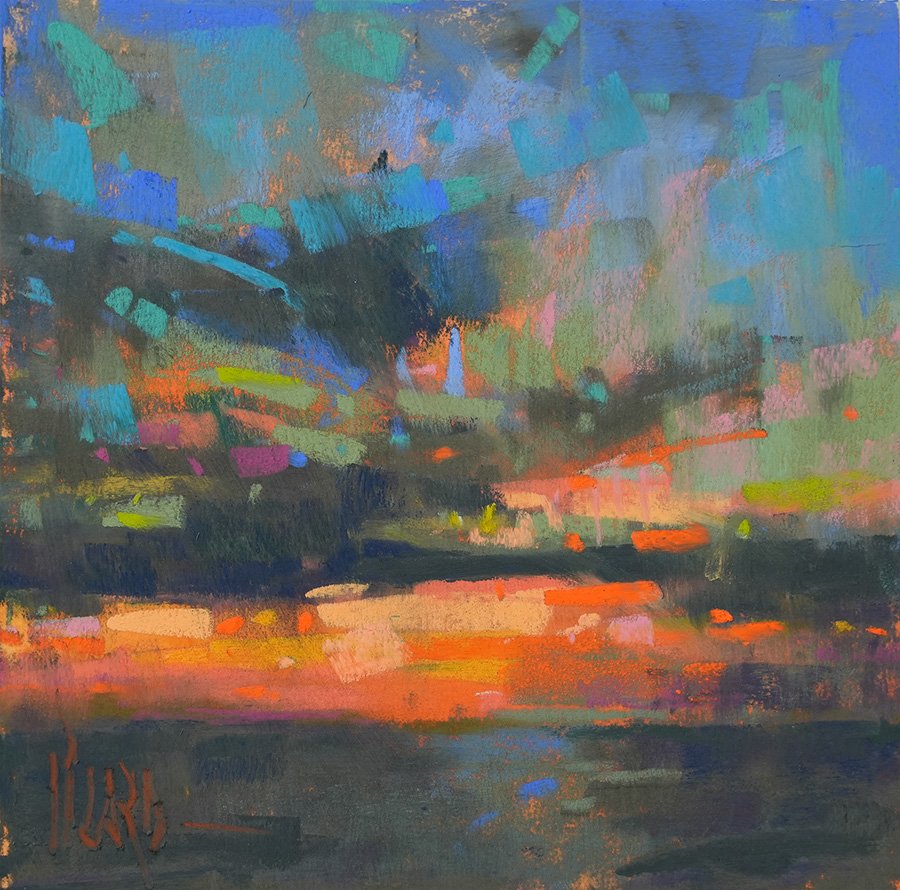How to Set your Colors Ablaze
Do you want to know how to use bold, expressive color in your paintings that is full of freshness and excitement?
I’ve got two words for you…Color Studies.
I just returned from Kelowna, BC after enjoying a landscape workshop with a delightful group of artists. What a blessing to be able to gather together and learn from one another again, inspire each other, provide encouragement and gain motivation to keep sharing the beauty of pastel with the world.
During my stay, I had the joy of sharing painterly techniques with the group, including the transforming power of risk-free color studies. I’m a full-fledged color addict at this point. These little paintings are an amazing opportunity to explore your color concept without all the pressure of a finished work of art. They invite us to take risks as well as give us permission to just play for a little while.
But in order to see results, we’ve got to hold true to the two cardinal rules of risk-free paintings:
Hovering, 6x6” Color Study
Keep it Small
No bigger than 6x8.” Bigger studies will tempt us to get overly invested in the work and treat it like a precious painting that needs refinement. As soon as that happens, risk-taking is out the window!
Make it Quick
No longer than 30 minutes. A time limit is essential to give you the urgency to be bold and suggestive. After all, you’ve got to create an impression of the entire scene in a half hour or less.
Think of it this way, William. How long does it take you to do the dishes? That’s right, about 30 minutes. How long does it take you to watch an episode of your favorite show? 30 minutes. Surely you can allow yourself 30 minutes of creative play on a small sheet of pastel paper! Keeping it small gives you permission to take chances because it’s only a scrap of paper after all.
These risk-free color studies have changed the way I paint, altered my approach to color, and transformed my mark-making over the years. I can’t say enough good things about them.
When you create a color study that speaks to you, try scaling it up to a larger work so you can spend more time developing the painting. I’ll warn you though, there is some strange magic that occurs in these little color studies, and you just might end up falling in love with them just like me.
I dare you to try a risk-free color study. Remember to keep it small and make it quick in order to see the results you're after. This tricks your inner artist critic into thinking you’re just washing dishes, and you can get away with all sorts of illicit adventures in color!
Would you like my help with exploring your risk-free color study join one of our upcoming courses where we explore colors in different types of work like portraits and landscapes.
Enjoy the rush,
Alain
P.S. I would love to see the color studies you create! Share your work on social media and tag me @alainpicard on Instagram and @picardstudio on Facebook.
















